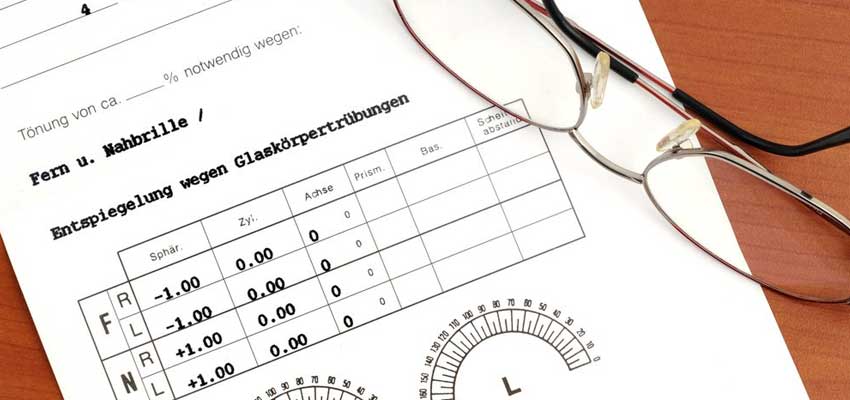
Eye Prescription Chart: Know about sph, cyl, axis in eye prescription
Tablet of Contents
If you’ve ever had an eye exam or received a prescription for eyeglasses or contact lenses, you might have come across an eye prescription chart. This chart contains specific measurements and abbreviations that help eyecare professionals determine the corrective lenses needed to address your vision issues.
Three key components of an eye prescription are sph, cyl, and axis. In this blog post, we will dive into these elements to help you better understand their meanings and significance.
The Eye Prescription Chart, also known as the Refraction Chart, is a tool used by eye care professionals to measure the refractive error of a patient’s eyes.
The chart consists of letters or symbols of varying sizes, which are displayed at a distance of 20 feet from the patient. A person’s ability to read even the smallest letters reveals how sharp their vision is.
The importance of the Eye Prescription Chart lies in its ability to help eye care professionals diagnose and correct visual impairments.
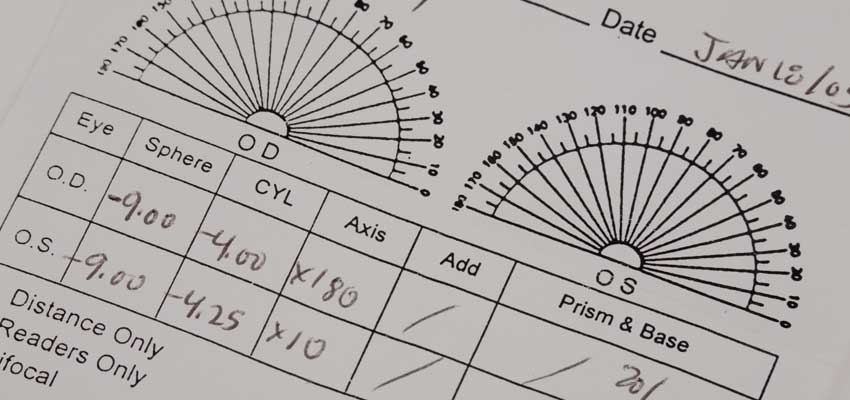
Accurate eye prescriptions are crucial for ensuring that a patient’s corrective lenses are properly prescribed, enabling them to see clearly and maintain healthy vision.
Eye prescription charts are used not only for routine eye exams but also for the diagnosis and treatment of eye diseases and conditions such as astigmatism, myopia, hyperopia, and presbyopia.
Understanding Eye Prescription
To understand eye prescription, it’s important to know what sph, cyl, and axis mean.
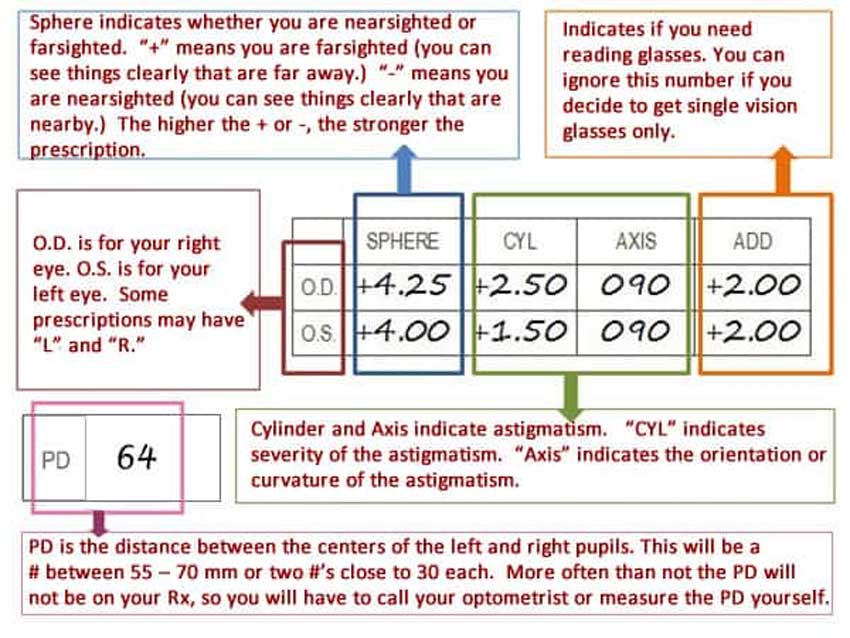
Sph in Eye Prescription
The amount of nearsightedness (myopia) or farsightedness (hyperopia) correction required is measured in spheres, or spheres (hyperopia).
It can be either a positive (+) or a negative (-) number and is expressed in diopters (D).
Nearsightedness is indicated by a negative number, whereas farsightedness is shown by a positive number.
The higher the numerical value, the stronger the lens power needed to correct the refractive error.
Also read about odhs meaning in prescription given by doctors.
Cyl in Eye Prescription
The term “cylinder” refers to the unit used to assess how much astigmatism is present in an eye. When the cornea is irregularly formed, astigmatism arises, which causes hazy or distorted vision.
Cyl can be either a positive or negative number and is also measured in diopters.
It represents the strength of the astigmatism correction needed. If there is no cylinder value in your prescription, it means you don’t have astigmatism.
Axis in Eye Prescription
The astigmatism’s direction is measured by the term “axis.” It represents the angle at which astigmatism is present in the eye and is measured in degrees from 0 to 180.
Together, sph, cyl, and axis provide a comprehensive prescription for corrective lenses that address both nearsightedness/farsightedness and astigmatism.
It ensures that the corrective lens’s cylindrical power is correctly positioned on the eye’s surface to compensate for the irregular corneal or lens curvature.
Note: Understanding these measurements in your eye prescription is essential for accurately producing corrective lenses that match your visual needs. Eyecare professionals use these values to craft eyeglasses or contact lenses that precisely compensate for your specific refractive errors, providing you with clear and comfortable vision.
Also. It’s worth noting that an eye prescription chart may contain additional information, such as pupillary distance (PD), which is the distance between your pupils. This measurement ensures that the lenses are properly centered for optimal vision correction.
Here is how to read doctor’s medical prescription format easily.
What are Sph, Cyl, and Axis in Eye Prescription?
- Sph in Eye Prescription: The lens power needed to correct nearsightedness (myopia) or farsightedness is measured in spheres, or sph (hyperopia). It can either be a positive or negative value and is expressed in diopters. If the number is positive, the individual is farsighted, and if it is negative, the person is nearsighted.
- Cyl in Eye Prescription: The term “cylinder” refers to the unit used to quantify the lens power required to correct astigmatism. A cornea or lens with an uneven shape causes astigmatism, a refractive defect that results in distorted or blurry vision. Cyl can be either a positive or negative number and is also measured in diopters.
- Axis in Eye Prescription: Axis is a measurement of the needed astigmatism correction’s orientation or angle. It represents the direction of the cylindrical power required to correct astigmatism and is measured in degrees from 0 to 180.
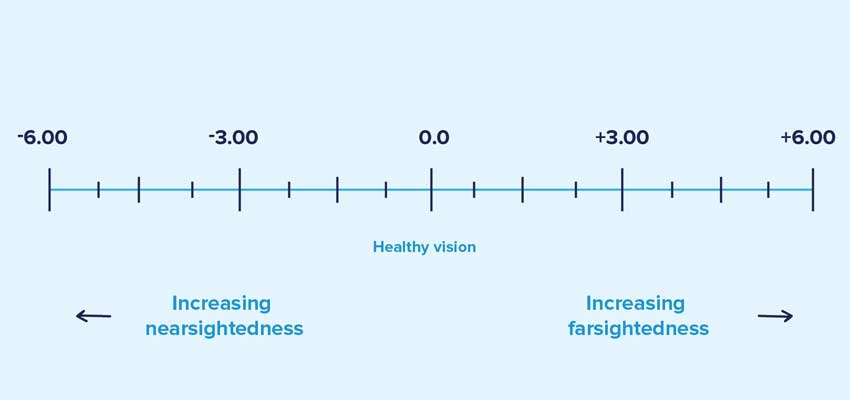
The eye prescription typically includes values for sph, cyl, and axis for each eye. For example, an eye prescription might read as follows:
OD (right eye): Sph: -2.50 Cyl: +1.25 Axis: 90
OS (left eye): Sph: -2.75 Cyl: +0.75 Axis: 180
In this example, the right eye has nearsightedness (-2.50 sph) and astigmatism (+1.25 cyl at 90 degrees axis), while the left eye has nearsightedness (-2.75 sph) and astigmatism (+0.75 cyl at 180 degrees axis).
You should also read about the best contact lenses brand in india here.
Importance of Knowing Sph, Cyl, and Axis in Eye Prescription
Knowing the values of sph, cyl, and axis in an eye prescription is important for both corrective lenses and proper eye care.
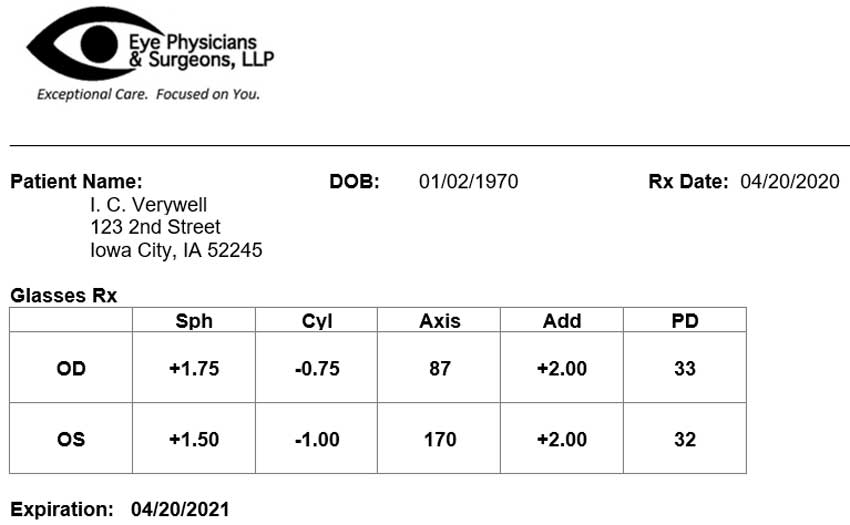
- Corrective lenses: The values of sph, cyl, and axis in an eye prescription determine the type and strength of corrective lenses needed to correct vision problems.The lens power in glasses or contact lenses must be precisely matched to the prescription to provide the proper correction for the individual’s eyes.An incorrect prescription can cause discomfort, headaches, and further damage to the eyes.
- Proper Eye Care: The values of sph, cyl, and axis in an eye prescription also help eye care professionals diagnose and monitor eye conditions, such as astigmatism, myopia, and hyperopia.Regular eye exams with updated prescriptions can help catch any changes in vision or eye health early on, leading to better treatment outcomes.Proper eye care also includes protecting the eyes from harmful UV rays, wearing appropriate eye protection during sports or work, and taking breaks during extended periods of screen time.
Consider reading about best eye protection glasses for computer users here.
In summary, knowing the values of sph, cyl, and axis in an eye prescription is crucial for both corrective lenses and proper eye care.
Regular eye exams and wearing the proper corrective lenses can help maintain healthy vision and prevent further damage to the eyes.
Conclusion
In conclusion, an eye prescription chart is an important tool used by eye care professionals to measure the refractive errors in a person’s eyes and provide the proper corrective lenses to improve their vision.
The chart provides values for sph, cyl, and axis, which are crucial for determining the type and strength of corrective lenses needed to correct nearsightedness, farsightedness, and astigmatism.
The values also help eye care professionals diagnose and monitor eye conditions, and regular eye exams with updated prescriptions can help prevent further damage to the eyes.
Overall, the importance of an eye prescription chart cannot be overstated, as it plays a crucial role in maintaining healthy vision and preventing eye problems.
It is recommended to schedule regular eye exams to ensure the most up-to-date and accurate prescription is being used.
Consider Reading:







मुनक्का बहुत ही फायदेमंद होता है क्या इसका सेवन मानसिक तनाव की समस्या से छुटकारा पाने के लिए भी किया…